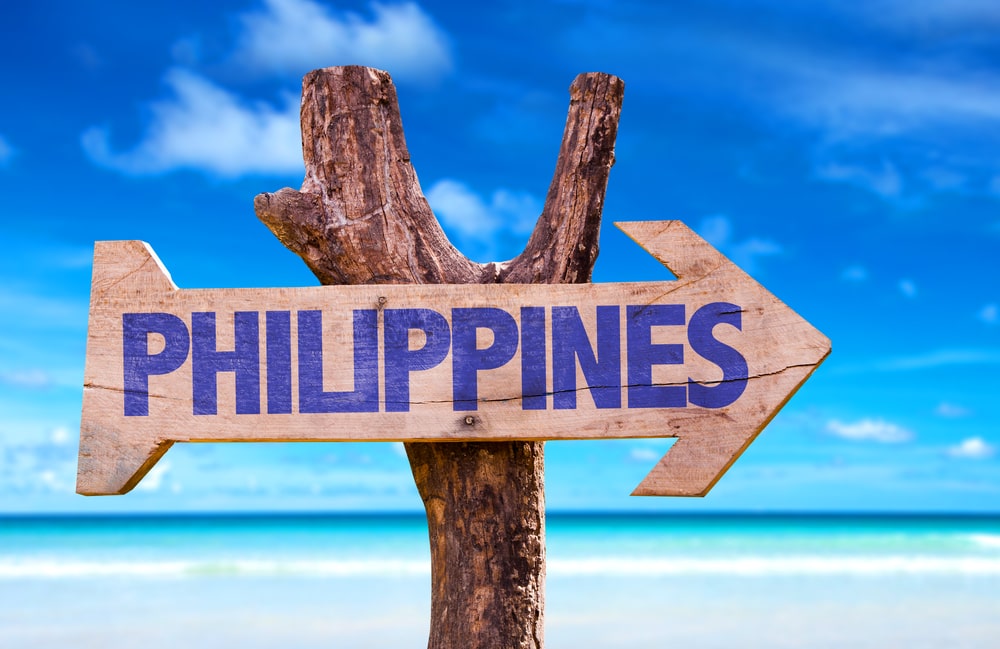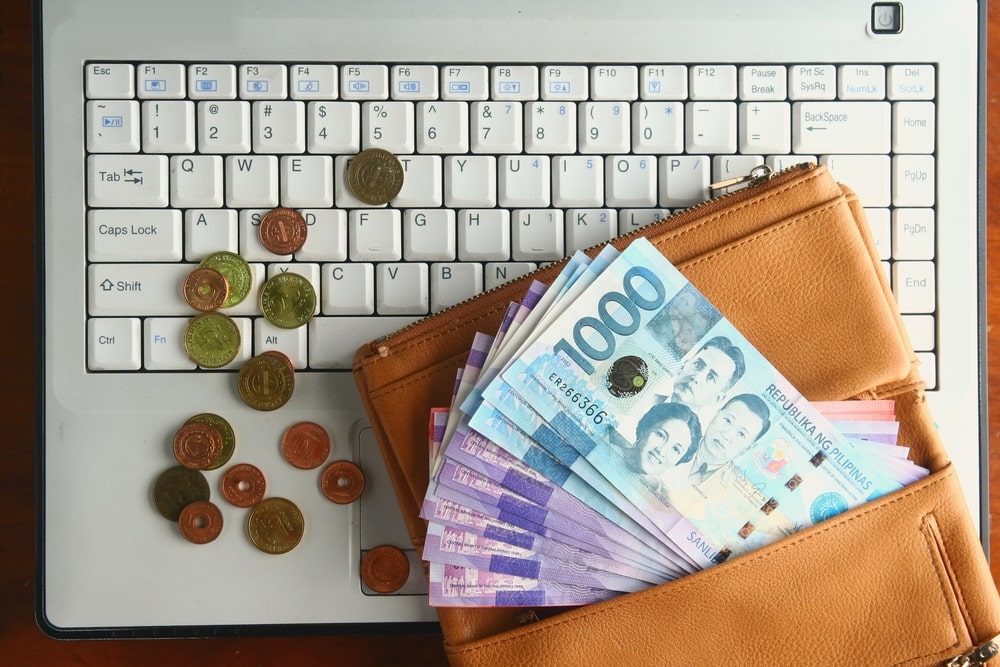How to open bank account in the Philippines
The Philippines, known for its beautiful islands, vibrant culture, and warm hospitality, has become a popular destination for expats. Whether you're retiring, working, studying, or investing, establishing a financial footprint is an essential step in settling into the archipelago. Here's our updated guide on how to open a bank account in the Philippines, with detailed, accurate, and practical advice.

Why Open a Bank Account in the Philippines?
Having a local bank account simplifies managing your finances. It allows you to:
-
Receive income or remittances.
-
Pay bills and expenses in local currency.
-
Avoid hefty international transaction fees.
-
Securely store your money under the protection of the Philippine Deposit Insurance Corporation (PDIC).
The PDIC insures deposits up to ₱500,000 per depositor in the event of insolvency, providing peace of mind for your funds. While this amount is significantly lower than the U.S. FDIC’s $250,000 coverage, it still offers valuable protection for everyday banking needs. PDIC is also poised to increase bank deposit protection within the year.
Can a Foreigner Open a Bank Account in the Philippines?
Yes, foreigners can open a bank account in the Philippines. However, the type of account available depends on your residency status:
- Resident foreigners (living in the Philippines for more than 180 days) can open the same types of accounts as Filipino citizens, including peso savings and investment accounts.
- Non-resident foreigners (living in the Philippines for less than 180 days) are limited to foreign currency accounts, such as dollar or Euro accounts. Peso savings accounts are typically unavailable to non-residents.
However, some banks may allow non-residents to open peso accounts under special circumstances, provided they meet specific requirements (e.g., ties to a Philippine-based employer or organization).
Resident vs. Non-Resident Foreigners
Resident Foreigners (staying longer than 180 days):
You are eligible for the same account types as Filipinos, including:
- Peso savings accounts
- Debit cards and credit cards
- Investment accounts (e.g., Unit Investment Trust Funds or UITFs)
Non-Resident Foreigners (staying less than 180 days):
Your options are limited to foreign currency accounts, such as US dollar or Euro savings accounts. The Philippine banking system does not allow foreign nationals to open peso accounts until they qualify as residents.
Documents Needed to Open a Bank Account in the Philippines
Opening a bank account in the Philippines typically requires the following documents:
For Filipinos:
- Two Valid Identification Documents (e.g., Passport, Driver’s License, or UMID).
- Proof of Address (e.g., utility bill or lease contract).
- Taxpayer Identification Number (TIN).
- Initial Deposit (amount varies by bank, usually ₱500 to ₱10,000).
For Foreigners:
- Passport or a government-issued ID from your home country.
- Alien Certificate of Registration (ACR) or Immigrant Certificate of Registration (ICR) for those staying longer than 59 days. The Alien Certificate of Registration Identity Card (ACR I-Card) is a microchip-based, credit card-sized identification card issued to registered foreign nationals in the Philippines. It replaces the older, paper-based ACR.
- Proof of Address (lease agreement or utility bill).
- Reference Letter from a current or previous bank (required by some institutions).
- Initial Deposit (varies by bank).
- Visa or Work Permit (for specific account types).
Step-by-Step Process
- Choose a Bank: Research banks that suit your needs. International banks like Citibank and HSBC may offer familiar services, but local banks like BDO, Metrobank, BPI, and Landbank are widely accessible.
- Prepare Your Documents: Double-check the required documents as listed above.
- Visit a Branch: Open your account in person. Some banks allow you to start the process online, but you’ll need to complete it at a branch.
- Fill Out the Application Form: Provide personal information and ensure accuracy to avoid delays.
- Submit Documents and Verify Identity: Bank staff will verify your documents and take a photo or signature sample.
- Deposit the Minimum Balance: The account will only be activated after depositing the required amount.
Best Banks for Expats in the Philippines
The Philippine banking system features six types of bank charters: Universal Banks, Commercial Banks, Thrift Banks, Rural Banks, Cooperative Banks, and Islamic Banks. They are all regulated by the Bangko Sentral ng Pilipinas. The majority of banking system assets in the Philippines are held by universal and commercial banks, dominating the market. Thrift and rural banks account for the remainder, focusing on small businesses, housing loans, and rural financial services. These smaller banks may have limited services that cater to a foreign national's needs.

The following banks are what we think are suited for expats and foreign nationals.
1. Banco de Oro (BDO)
- Largest bank with over 1,400 branches and 4,400 ATMs nationwide.
- Offers foreign currency accounts and remittance services.
- Perks include cashback and discounts at partner establishments.
Multi-currency Accounts Offered: BDO Multi-Currency Savings Account
Currencies Supported: USD, EUR, GBP, JPY, AUD, SGD, CAD, HKD, and CNY.
Minimum Deposit: Varies by currency (e.g., USD 500 for a USD account).
Key Features:
- Separate sub-accounts for each currency.
- Competitive foreign exchange rates.
- Internet banking access for account management.
2. Metrobank
- Extensive network with 950 branches and 2,300 ATMs.
- Offers interest-earning accounts, foreign currency accounts, and investment options.
- Convenient for international transactions via Cirrus and Maestro networks.
Multi-currency Accounts Offered: Metrobank Foreign Currency Deposit Unit (FCDU)
Currencies Supported: USD, EUR, JPY, GBP, HKD, AUD, SGD, CAD, and CNY.
Minimum Deposit: USD 500 (or equivalent in other currencies).
Key Features:
- High interest rates for time deposits in foreign currencies.
- Wide branch network for easy access.
- Designed for individuals and businesses with international transactions.
3. Bank of the Philippine Islands (BPI)
- Renowned for robust online and mobile banking platforms.
- Offers a wide range of accounts for individuals, businesses, and investors.
- Features include SMS notifications and interest-earning options.
Multi-currency Accounts Offered: BPI Multi-Currency Savings Account
Currencies Supported: USD, EUR, GBP, JPY, HKD, SGD, AUD, CAD, and CNY.
Minimum Deposit: Varies by currency.
Key Features:
- Allows holding funds in multiple currencies within a single account.
- Provides access to online banking and fund transfers.
- Suitable for frequent travelers and international traders.
4. Landbank of the Philippines
- A government-owned bank with extensive coverage.
- Offers savings and investment accounts, loans, and remittance services.
- Ideal for accessing rural areas.
Other banks that offer multi-currency accounts include the Philippine National Bank (PNB), UnionBank of the Philippines, and Security Bank.
Banking Fees and Charges in the Philippines: What You Need to Know
Banking in the Philippines comes with various fees that can affect how you manage your money. Whether you're opening a personal or business account, it’s important to understand these charges to avoid unnecessary costs. Fees can vary between banks, so comparing options beforehand can help you choose the best fit for your financial needs.
Some of the most common charges include account maintenance fees, which may apply if your balance falls below the required minimum, and ATM withdrawal fees, especially when using a machine outside your bank’s network. Banks may also charge for international transactions, fund transfers, and certain over-the-counter services. If you plan to use a debit or credit card, check if there are activation or annual fees, as well as potential foreign transaction costs.
For those who frequently send or receive money from abroad, international bank transfers can be expensive due to high conversion rates and hidden charges. In such cases, digital banking solutions like Narvi offer a more cost-effective way to manage cross-border payments with transparent fees and multi-currency options.
To make the most of your banking experience, review a bank’s fee structure before opening an account. Checking official bank websites or speaking with a representative can provide clarity on any hidden costs. By choosing the right bank or alternative financial provider, you can keep your money working for you without paying more than necessary.
Typical Bank Branch Opening Hours in the Philippines
Most bank branches in the Philippines operate on the following schedule:
|
Day |
Operating Hours |
|---|---|
|
Monday - Friday |
9:00 AM – 3:00 PM or 4:00 PM |
|
Saturday |
Select branches only (9:00 AM – 12:00 PM) |
| Sunday |
Closed (except for mall-based branches) |
Mall-based branches (e.g., BDO, BPI, Metrobank) often have extended hours, typically staying open until 6:00 PM – 7:00 PM, even on weekends.
Provincial branches may have shorter operating hours than metro branches.
Bank holidays follow the Philippine national holiday schedule, so it’s best to check in advance if you plan to visit a branch on a special occasion.
For more flexible banking options, digital and mobile banking services offered by banks like BPI, UnionBank, and international alternatives like Narvi allow customers to manage transactions online without visiting a branch.
Requirements for Opening a Corporate Bank Account in the Philippines
Opening a corporate bank account in the Philippines requires several documents to comply with local regulations. While specific requirements may vary from bank to bank, the following are commonly requested:
- Articles of Incorporation. This document defines the company’s structure, purpose, and operations and must be SEC-approved.
- Corporate By-Laws. Outlines the internal governance rules of the company and is another SEC-approved document.
- Registration Certificates from the SEC. Proof of legal registration and authority to operate.
-
Notarized Board Resolution. Must include:
- Authorization to open a bank account
- List of authorized signatories and the extent of their authority.
- Notarized List of Board Directors, Officers, and Stockholders. Ensures transparency and compliance with local laws.
- Two Valid Identification Cards of Signatories
- Government-issued IDs such as passports or driver’s licenses.
Additional Documents That May Be Required
- Mayor’s Business Permit: Proof of legal operations within the local jurisdiction.
- Tax Identification Number (TIN) Certificate: Ensures compliance with tax regulations.
- Proof of Address: Utility bills, lease agreements, or similar documents.
- General Information Sheet (GIS): Includes up-to-date details of the company’s officers and stockholders.
- Audited Financial Statements (if available): Often required for established businesses.
- Foreign-owned corporations may also need a Certificate of Inward Remittance (CIR) to verify the inflow of foreign investments.
Corporate bank accounts in the Philippines are operational with account numbers and e-banking access within 4-6 weeks on average
Key Tips
- Check with the specific bank for their checklist, as requirements can vary.
- Ensure that all notarized documents are properly authenticated, especially if they originate from outside the Philippines.
- Be prepared for a processing time of several weeks, as banks conduct thorough verifications.
With the right documentation, opening a corporate bank account is straightforward and ensures smooth financial operations for your business.
Challenges and Tips
-
Stringent Anti-Money Laundering (AML) Rules.
- Banks in the Philippines strictly adhere to AML regulations, especially for non-residents. Be prepared to provide additional documentation if requested.
-
Fees and Minimum Balances.
- Banks may charge fees for maintaining accounts, using ATMs outside their network, and failing to meet minimum balance requirements. Always read the fine print.
-
Account Setup Before Arrival.
- Some international banks allow you to open an account remotely. However, this process can be complex and may require notarized documents.
Beware of Fixers Offering to Open Bank Accounts for Tourists
While opening a bank account in the Philippines as a tourist is officially not allowed, some people claim they can bypass this restriction by hiring an "agent" or fixer—but this comes with serious risks.
Fixers operate by exploiting loopholes or using questionable documents, and while they may succeed in opening an account, there’s no guarantee it will remain accessible. Banks regularly audit accounts, and if your documents don’t pass a deeper review, your account could be frozen or closed, putting your funds at risk.
Expats who have explored this route warn that:
✔ Fixers exist but are unpredictable—some may be legit, but many are scammers.
✔ They often advertise on WeChat, Facebook, or through word of mouth.
✔ Even if an account is opened, getting long-term support can be difficult, as banks may refuse to assist if they suspect irregularities.
✔ Using a fixer for minor conveniences (like speeding up an appointment) is one thing, but skipping legal banking requirements is risky.
If you genuinely need a Philippine bank account, the safest approach is to stay for at least 59 days and apply for an Alien Certificate of Registration (ACR) card, which allows foreigners to open an account legally. If that’s not an option, some banks may be more flexible depending on the branch—so trying different locations might work.
Alternatively, for those who only need a way to send and receive money, a virtual banking solution like Narvi may be a better, safer alternative.
Opening a bank account in the Philippines is a straightforward process if you’re prepared with the right documents. Choose a reputable bank, follow the official procedures, and avoid shortcuts (even if you know the bank manager) that could lead to complications. Whether you're in bustling Manila or a serene island province, having a local bank account - or opting for a trusted banking alternative like Narvi - will make your life in the Philippines more convenient and financially secure.
Frequently Asked Questions about Bank Accounts in the Philippines
Can foreigners open a Philippines bank account?
Yes, foreigners can open a bank account in the Philippines. Resident foreigners (staying more than 180 days) can open peso and foreign currency accounts, while non-residents (staying less than 180 days) are generally limited to foreign currency accounts, such as USD or Euro savings accounts. Some banks may allow peso accounts for non-residents under special conditions, such as employment ties to a Philippine company.
Which US banks have branches in the Philippines?
Several U.S. banks operate in the Philippines, either directly or through partnerships. These include:
However, personal banking services for U.S. customers are limited in the Philippines.
Can I open a Philippine bank account online?
Most Philippine banks require an in-person visit to open an account, especially for first-time customers. However, some banks, like BPI and UnionBank, offer limited online account opening for existing clients. International banks like HSBC and Citibank may allow remote account setup for premium clients.
How much money do you need to open a bank account in the Philippines?
The minimum initial deposit depends on the bank and account type. Here are some examples:
Some banks also offer zero-maintaining balance accounts with limited features.
Can I open a Philippine bank account as a US citizen?
Yes, U.S. citizens can open bank accounts in the Philippines, but they must provide additional documentation due to FATCA (Foreign Account Tax Compliance Act) regulations. This may include:
Can a foreigner (e.g., an American citizen or a British expat) open a BDO account in the Philippines?
Yes, foreigners can open an account with BDO (Banco de Oro), but requirements vary depending on residency status. Resident foreigners can open peso and foreign currency accounts, while non-residents are typically restricted to USD or Euro accounts. Required documents include a passport, proof of address, and in some cases, an ACR I-Card.
Can I open a bank account in the Philippines even if I am abroad?
Most banks require in-person verification to open a new account. However, some international banks (e.g., HSBC, Citibank) may allow remote account opening for high-net-worth clients. Virtual banking solutions like Narvi offer an alternative for business transactions.
Can I open a Philippine bank account from the US?
Some international banks like HSBC Premier and Citibank Global Banking allow customers to start the process remotely. However, most Philippine banks require an in-person visit for verification and document submission.
What is the best bank in the Philippines for US citizens?
The best bank depends on your needs. Here are some recommendations:
If you primarily manage international transactions, Narvi’s virtual banking could be a better option.
Can I open a BDO account online while abroad?
No, BDO requires an in-person visit for first-time account opening. However, existing customers may be able to apply for additional services online.
Does Bank of America have branches in the Philippines?
Bank of America does not offer retail banking in the Philippines. It operates mainly through partnerships for corporate and investment banking.
Does Chase have branches in the Philippines?
JP Morgan Chase has a presence in the Philippines but focuses on corporate banking. It does not offer personal banking services for expats or residents.
What US bank can I use in the Philippines?
U.S. banks with a presence in the Philippines include:
- Citibank (personal and business accounts)
- Wells Fargo (remittance services)
- JP Morgan Chase (corporate banking)
- HSBC (global banking for expats)
Alternatively, Narvi’s virtual banking provides international transactions without the need for a U.S. bank in the Philippines.
Can a US citizen open a Philippine bank account?
Yes, U.S. citizens can open bank accounts in the Philippines but must comply with FATCA regulations, which require additional tax documentation.
Are banks in the Philippines safe?
Yes, Philippine banks are regulated by the Bangko Sentral ng Pilipinas (BSP) and covered by the Philippine Deposit Insurance Corporation (PDIC), which insures deposits up to ₱500,000 per depositor.
For international transactions, virtual banking solutions like Narvi offer additional security and convenience.
Can a tourist (non-resident) open a bank account in the Philippines?
Tourists (staying less than 59 days) generally cannot open a local peso account. However, some banks may allow non-residents to open foreign currency accounts with limited services.
Can a tourist (non-resident) open a bank account in the Philippines?
Tourists (staying less than 59 days) generally cannot open a local peso account. However, some banks may allow non-residents to open foreign currency accounts with limited services.
Where can I find the USD to PHP exchange rate?
You can check the latest USD to PHP exchange rate on:
- Bangko Sentral ng Pilipinas (BSP) official website
- Major Philippine banks like BDO, BPI, and Metrobank
- Currency exchange platforms like XE.com or Wise
For business transactions, Narvi offers competitive exchange rates for international payments.
Narvi: Your Virtual Banking Solution
Are you an entrepreneur residing in the Phillippines? Narvi Payments offers an efficient alternative to traditional banking for businesses managing international finances. With a dedicated Euro IBAN, you can send and receive business Euro payments in the Philippines and over 100 other countries. Narvi’s platform is:
- Quick: Apply for a new account in under 10 minutes.
- Cost-Effective: Avoid hefty fees with transparent pricing for international transactions.
- Customizable: Tailored for businesses needing seamless, online banking solutions.
Whether you’re sending SWIFT payments abroad or managing incoming transactions, Narvi simplifies the process and saves you time and money. It’s the trusted choice for businesses navigating the complexities of international banking.
Originally published June 23, 2017. Updated January 18, 2024.
Disclaimer
B2Bpay.co does not provide tax, investment, legal or accounting advice. The material on this page has been prepared for informational purposes only. It should not be relied on for financial or legal advice. You should consult your own tax, legal, and accounting advisors before engaging in any transaction.
Page content
About the author

Disclaimer
This publication is provided for general information purposes and does not constitute legal, tax, or other professional advice from B2B Trade Payment Services AB or its affiliates, and it is not intended as a substitute for obtaining advice from a financial advisor or any other professional.
How to open a bank account in Europe
We have comprehensive guides on opening bank accounts across multiple European countries. These resources also explain how a virtual bank account with Narvi Payments can be a smarter alternative for international transfers, offering better exchange rates and greater convenience.
-
 How to open a bank account in Andorra
How to open a bank account in Andorra -
 How to open a bank account in Austria
How to open a bank account in Austria -
 How to open a bank account in Bulgaria
How to open a bank account in Bulgaria -
 How to open a bank account in Croatia
How to open a bank account in Croatia -
 How to open a bank account in Czech Republic
How to open a bank account in Czech Republic -
 How to open a bank account in Cyprus
How to open a bank account in Cyprus -
 How to open a bank account in Denmark
How to open a bank account in Denmark -
 How to open a bank account in Estonia
How to open a bank account in Estonia -
 How to open a bank account in Finland
How to open a bank account in Finland -
 How to open a bank account in France
How to open a bank account in France -
 How to open a bank account in Germany
How to open a bank account in Germany -
 How to open a bank account in Greece
How to open a bank account in Greece -
 How to open a bank account in Hungary
How to open a bank account in Hungary -
 How to open a bank account in Ireland
How to open a bank account in Ireland -
 How to open a bank account in Italy
How to open a bank account in Italy -
 How to open a bank account in Latvia
How to open a bank account in Latvia -
 How to open a bank account in Liechtenstein
How to open a bank account in Liechtenstein
-
 How to open a bank account in Lithuania
How to open a bank account in Lithuania -
 How to open a bank account in Luxembourg
How to open a bank account in Luxembourg -
 How to open a bank account in Malta
How to open a bank account in Malta -
 How to open a bank account in Monaco
How to open a bank account in Monaco -
 How to open a bank account in the Netherlands
How to open a bank account in the Netherlands -
 How to open a bank account in Norway
How to open a bank account in Norway -
 How to open a bank account in Poland
How to open a bank account in Poland -
 How to open a bank account in Portugal
How to open a bank account in Portugal -
 How to open a bank account in Romania
How to open a bank account in Romania -
 How to open a bank account in San Marino
How to open a bank account in San Marino -
 How to open a bank account in Slovakia
How to open a bank account in Slovakia -
 How to open a bank account in Slovenia
How to open a bank account in Slovenia -
 How to open a bank account in Spain
How to open a bank account in Spain -
 How to open a bank account in Sweden
How to open a bank account in Sweden -
 How to open a bank account in Switzerland
How to open a bank account in Switzerland -
 How to open a bank account in the UK
How to open a bank account in the UK
